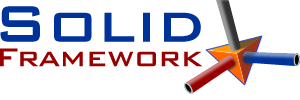How It Works
So how does Solid Book work?
PDF files contain vast amount of formatting information – there can be many font types and sizes used within the file, colored text, plus images, tables and so on. This is fantastic if you want a fully featured and highly controlled view of the page.
But generally e-Readers don’t need all of that information, and it just makes for complexity in viewing the document on a screen smaller, or with a different height to width ratio, than the original PDF.
Solid Book has been designed to have a simple user interface. In fact the only things that you can adjust are font type, size, margin width, and by resizing the application (where possible) page size.
This conversion is accomplished using Solid Framework to extract the import content from the PDF. Solid Book then takes the content and simplifies the fonts and styling, and allows the content to wrap based on the width of the page within Solid Book, rather than the width of the page in the PDF. Ultimately all of the text is shown with a single font style, and images and tables are converted into bitmaps as a “standard way” of displaying their content.
The great thing about Solid Book is that if you don’t like the current options, then the source code is available so that you can rebuild the solution and do things your own way.
